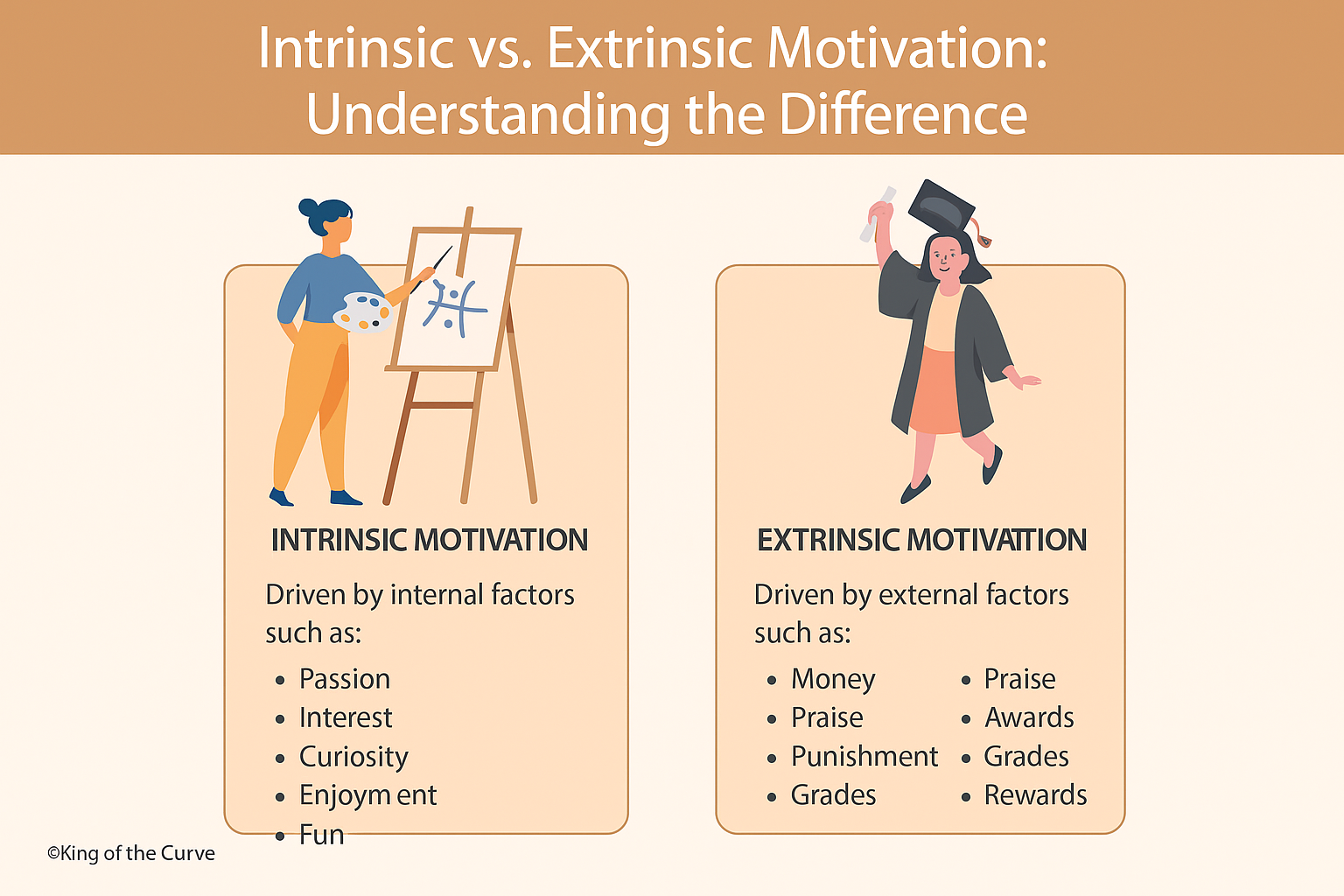🎯 Intrinsic vs. Extrinsic Motivation: Know the Difference for the MCAT
Motivation is the driving force behind behavior. On the MCAT, understanding what pushes people to act — whether it's internal passion or external reward — helps you master psych/soc passages and think more critically about human behavior.
💡 Key Definitions
| Type | Definition | Examples |
|---|---|---|
| Intrinsic Motivation | Behavior driven by internal satisfaction | Studying out of curiosity or love of learning |
| Extrinsic Motivation | Behavior driven by external rewards or consequences | Studying to earn a high grade or scholarship |
🧠 MCAT Tip
MCAT Psychology often frames questions like:
“A student studies because they enjoy learning new things. This is an example of:”
✅ Intrinsic Motivation
“A worker performs extra shifts to earn a bonus. This is an example of:”
✅ Extrinsic Motivation
Watch out for passages with overlapping influences — you may need to differentiate which factor is dominant.
🎓 Application in Real Life & Med School
| Situation | Intrinsic | Extrinsic |
|---|---|---|
| Learning anatomy | Fascination with the human body | Preparing for lab practical |
| Practicing sutures | Curiosity about surgical skills | Earning a clinical rotation eval |
| Volunteering in a clinic | Purpose and empathy | Medical school resume builder |
💬 MCAT Mnemonic
💭 “Inside = Interest, Outside = Outcome”
If the motivation comes from within → intrinsic
If it’s based on what you’ll get → extrinsic
📘 Conclusion
Understanding what fuels behavior is essential — both for your MCAT score and your journey in medicine. Recognizing intrinsic vs. extrinsic motivators helps in studying smarter, interacting empathetically, and building long-term resilience.
🚀 Call to Action
Want more MCAT psych/soc visuals like this?
🧠 Get 1000+ breakdowns, adaptive practice, and gamified review — all in one place.
📲 Start free at kingofthecurve.org/mcat
Frequently Asked Questions (FAQs)
-
Aim for 4-6 focused hours, ensuring you incorporate breaks to avoid burnout.
-
Practice mindfulness techniques, take practice exams under realistic conditions, and maintain a balanced lifestyle.
-
Set short-term goals, seek support from mentors, and reward yourself for small achievements.
-
Regular exercise improves focus, reduces stress, and enhances overall mental clarity.
-
KOTC offers personalized learning tools, gamification features, and adaptive question banks to help students stay on track without burnout.


